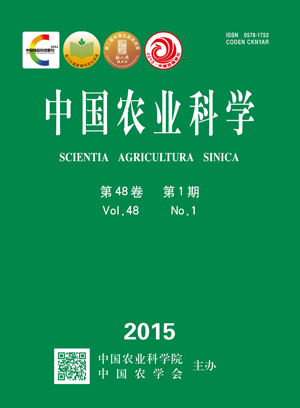【Objective】 The objective of this study is to obtain cDNA sequences of Obstructor (Obst) family genes of cuticular proteins from Locusta migratoria, clarify their molecular characterization and biological function, and to get new molecular target for pest management. 【Method】 The cDNA fragments of Obst family genes were searched from locust transcriptome database and the sequences were further analyzed by BLAST at NCBI, the candidated cDNA fragments belonging to the Obst family genes were confirmed by sequence alignment with other known insect Obst family genes. The primers were designed for non full-length cDNA sequences and RACE-PCR was performed to amplify 3′ cDNA sequences, the full-length cDNA sequences of Obst family genes were assembled by overlap region. All the full-length cDNA sequences were translated into amino acid sequences and signal peptides were analyzed by SignalP tool, functional domains were predicted by SMART website. Then phylogenetic tree was constructed by using Mega 5.10 software with homologous amino acid sequences encoded by the Obsts from Drosophila melanogaster and the CPAP3 family genes (the Obst homologous genes) from Tribolium castaneum. The real-time quantitative PCR (qPCR) was applied to analyze the gene expression patterns of LmObst genes in different tissues and developmental stages of the 5th instar nymphs in the integument. RNA interference (RNAi) technology was used to explore biological function of these Obst genes. 【Result】 EightcDNA fragments assumed to be Obst family genes were got from locust transcriptome database, which showed high similarity with CPAP3 family genes of T. castaneum and Obst family genes of D. melanogaster by BLAST analysis. Five of them were the full-length cDNA sequences, and three of them missed 3′ end sequences. Then three full-length cDNA sequences were further amplified by using RACE-PCR technique. The functional domain analysis of eight LmObstsshowed that they all had a signal peptide and three chitin binding domain ChtBD2, which are in accordance with the characteristics of the representative insect Obst cuticular protein. According to the result of phylogenetic analysis, eight LmObst genes were named as LmObst-A1, LmObst-A2, LmObst-B, LmObst-C, LmObst-D1, LmObst-D2, LmObst-E1 and LmObst-E2, respectively. The qPCR results showed the tissue distribution of eight LmObst genes. LmObst-E1 and LmObst-E2 werespecifically expressed in foregut and hindgut, LmObst-D1 was mainly expressed in integument and foregut, the others were highly expressed in integument, foregut and hindgut, and lowly expressed in gastric caeca, midgut, Malpighian tube and fat body. Developmental expression patterns showed that they had a similar trend, eight LmObst genes were highly expressed at the early stage of the 5th instar nymphs, gradually reduced to a minimum at the middle stage, then got raised before molting. RNAi was applied to explore their biological function, eight dsLmObsts were injected into the 5th day of 5th instar nymphs, respectively, and the control group was injected with equal amount dsGFP. The silencing efficiency was detected at 48 h after dsRNA injection, and the mRNA expression was significantly reduced. Further phenotypic observation showed that 80% nymphs injected with dsLmObst-E1 appeared no molting and died, the rest 20% nymphs could molt to the next stage, but the molting time delayed about 1-2 d, after molting to adults, the development was retarded and died within 16 h. However, the control nymphs with dsGFP injection successfully molted to the adults and developed well. The nymphs injected with the other dsObsts displayed slow development, the molting time delayed about 1-3 d, but no visible abnormal phenotypes were found. 【Conclusion】 The eight full-length cDNA sequences of Obst family genes were obtained from L. migratoria. LmObsts had typical domain structure of Obst protein with a signal peptide and three chitin binding domain (ChtBD2). LmObsts were mainly responsible for the formation of integument, foregut and hindgut, which developed from ectoderm. LmObst-E1 is essential for locust development, silencing LmObst-E1 was lethal to L. migratoria, the mRNA suppression of the other seven LmObsts displayed developmental delay, but no lethal effect was observed.









